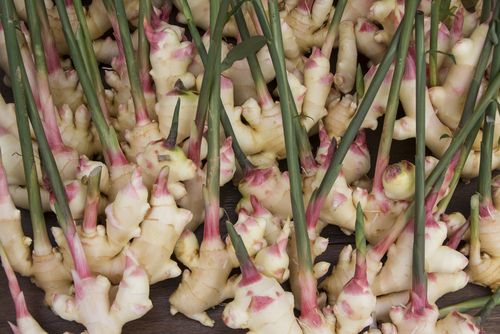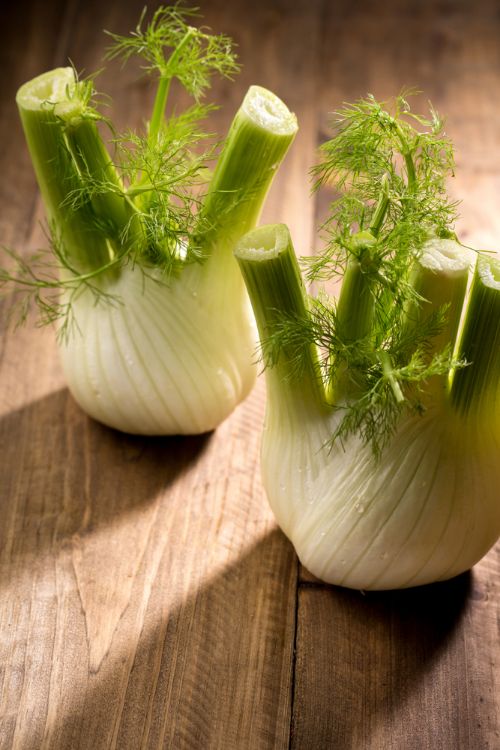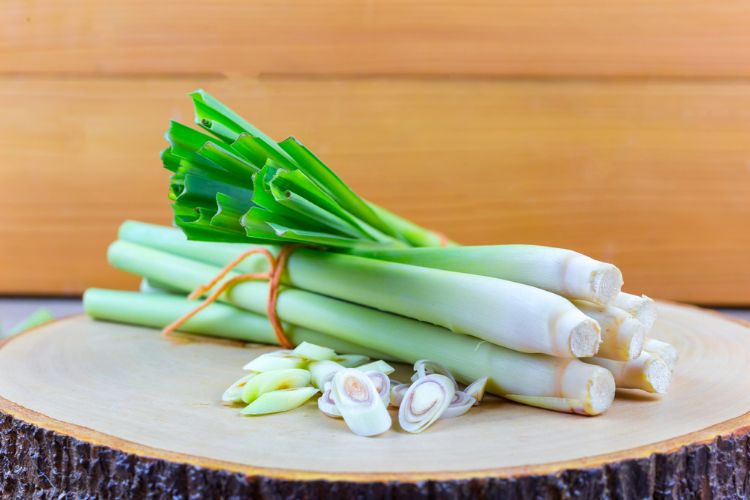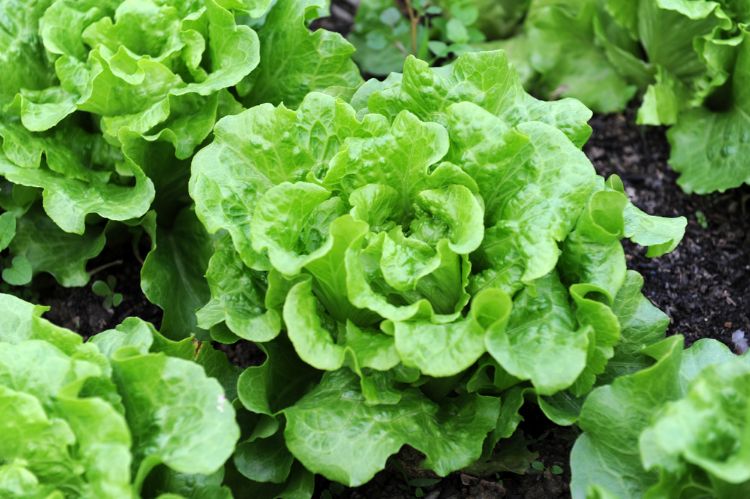Do you throw your garlic bulbs out once they start to sprout? What about your potatoes when they get a little wrinkly? How about ginger root that sits out on the counter too long?
You could be getting a lot more value out of your produce than you realize! Many popular edibles can be regrown from the scraps you're likely throwing out. Keep reading for a list of veggie scraps you will want to hang on to from now on!
Advertisement

Shutterstock
1. Pineapple
Yes! You can regrow pineapples with just the tops alone! To start, twist the leaves away from the pineapple. Use a fresh top and remove a couple of layers of the outermost leaves. Also, cut away any fruit that's still attached at the base of the leaves. Then suspend the top in a couple of inches of water.
Using a clear glass will make it easy to see the roots form. Once roots are about 1/4 inch long, which usually happens in a week or two, plant them in a container filled with potting soil and organic fertilizer. Just a heads up: Your new pineapple plant will likely be ornamental in nature. Fruit, if produced at all, can take up to two years. But as bromeliads, pineapples make an amazing (free) houseplant!

Shutterstock
2. Ginger root
Have you ever bought ginger root and noticed little buds forming? Plant it! You'll have fresh ginger to harvest soon enough. Ginger is a tropical plant, so keep it indoors in cooler climates.
Try soaking the roots overnight to encourage growth and then placing the rhizome in sphagnum moss until leaves and roots develop. Then you can transfer it to a container filled with potting soil. Ginger doesn't like standing water, so make sure your container has drainage holes. For more tips, be sure to check out how to grow an endless supply of ginger at home.

Shutterstock
3. Basil
Basil is a breeze to propagate. Simply take some healthy, fresh, 4-inch cuttings from a young basil plant. Leave just two sets of leaves at the top of each cutting and remove the remaining leaves. Make a fresh cut just beneath one of the lowest nodes (where leaf sets grow).
Then submerge the cuttings in a few inches of clean water. Change the water regularly and wait for roots to form, which may take between two and four weeks. Plant it in a small pot for the windowsill or outside in your garden.

Shutterstock
4. Mint
Another herb worth growing from cuttings is mint. Much like basil, you'll want cuttings about 4 to 5 inches in length. Remove lower leaves and place the cuttings in clean water. Once roots develop, which will happen within a couple of weeks, transfer to a container filled with potting soil.

DIY Everywhere
5. Green onions and scallions
Do you love to toss some green onions on just about everything? Buy them once, and then grow them from the scraps on a windowsill. Place the root leftover from the green onions in a couple of inches of water.
Remember to use filtered water. In just a few days you'll notice roots form, but also the leaves will start to grow. Continue to harvest while in water, or plant in a container of potting soil. For the full step-by-step tutorial, be sure to check out how to green onions from a container.

Shutterstock
6. Red onions
If you're planning to regrow your onions from store-bought onions, choose bulbs with a good-looking root. Once you cut the root from an onion, set it aside for a day or two to let the skin dry out a bit. Then plant the root in a container of potting soil (you shouldn't be able to see the onion). Water regularly.
Your onion should push several new stalks up. These stalks are called sets, and they will need to be separated and planted out. Each one should produce its own onion! For more, check out how to grow onions at home for free.

Shutterstock
7. Garlic
If your garlic cloves start to sprout, plant them! Garlic is one of the easiest plants to grow over and over again. One clove planted in the garden, in either early fall or late winter depending on your area, can multiply into a bulb of multiple cloves. It takes about nine months, however, so you'll have to have patience.
Another option is to plant garlic in a container and keep it indoors. You won't get a classic garlic bulb this way, but you'll be able to use the milder garlic greens as a flavorful garnish. For more, read how to grow an endless supply of garlic at home for free.

Shutterstock
8. Fennel
After you cut up fennel to use, save the base of the plant. All you need to do to regrow this licorice-tasting edible is to place the leftover base in a couple of inches of water in a sunny location. Once roots form, you can choose to plant it or keep growing it in water. It's that simple!

Shutterstock
9. Celery
Celery follows the same protocol as many others. Once you use the celery stalks, save the end that's leftover. Place it root-side down in clean water for around a week. Then transfer the celery to rich, well-draining soil and watch it really start to take off. For more details, be sure to check out how to grow an endless supply of celery at home.

Shuttrestock
10. Lemongrass
It's nothing short of amazing how many plants can regrow themselves starting out with clean water. Lemongrass is another one of them! Place leftover stalks in a few inches of water and wait for roots to develop.
Once they become 3 inches long or more, they are ready to put out in the garden. Lemongrass is a perennial and can grow up to 5 feet high and wide! So regrow this plant once, and you'll have plenty to harvest in seasons to come.

Shutterstock
11. Lettuce
Buy a fresh head of lettuce, make a salad and plop the base of the leaves you're left with in a couple of inches of water. Within a week it will begin to regrow! Lettuce leaves may be smaller and some plants may not grow at all.
Don't be discouraged; experiment with different types of lettuces. Bok choy can also be regrow in this way. It's just one option for getting the most out of the food you buy!

Shutterstock
12. Sweet potatoes
If you love sweet potatoes, consider growing them yourself! First, you'll need some healthy, delicious sweet potatoes. Also keep in mind that this is best done in early spring since sweet potato slips require a majority of the season to mature.
Submerge more than half of a sweet potato in a glass of water and sitting it on a sunny windowsill. Wait for sprouts to form and reach 4 inches or so. Each sprout is considered a slip. Remove the slips and place them in a separate glass of water. Once roots form and grow a little, plant slips out in the garden after all chance of frost has passed.

Shutterstock
13. Potatoes
Potatoes will sprout when their dormancy period is up and will continue to grow strong if given adequate warmth and light. So if you pull some old potatoes out of the fridge, check for signs of growth. Before or just after sprouting, chop your potato into several chunks, being careful to leave two eyes (places where sprouts will form) per chunk.
If your area is still experiencing freezing temperatures, plant them indoors in a container to keep them happy. Once all chance of frost has passed, transplant them to the garden.
Advertisement
When regrowing food from store-bought produce, it's really important to choose healthy, organic and disease-free plants. Many non-organic edibles are treated with pesticides as well as growth-inhibiting chemicals. Fresh from the farmer's market or a local health store are your best options if you want repeated harvests. Also, when using water to stimulate root growth, make sure to keep the water clean and fresh. Try to use filtered and chlorine free water as well.

